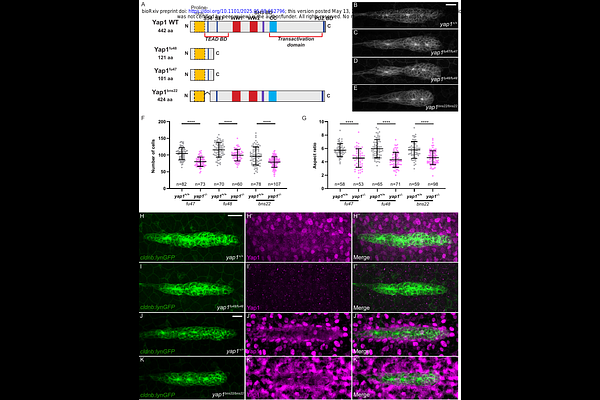Vgll4 Proteins limit Organ Size in Zebrafish through Yap1-Dependent and -Independent Mechanisms

Vgll4 Proteins limit Organ Size in Zebrafish through Yap1-Dependent and -Independent Mechanisms
Lardennois, A.; Dingare, C.; Duda, V.; Klemmt, P. A.; Heinzen, C.; Kleinhans, D.; Falk, T.; Schelmbauer, C.; Mozolewska, O.; Papadopoulou, S.; Lai, J. J. K.; Stainier, D. Y. R.; Lecaudey, V.
AbstractPrecise control of organ size is crucial during development and homeostasis. Dysregulation of the underlying mechanisms can result in organ malformation and tumorigenesis. Although the Hippo signaling pathway plays a key role in regulating organ growth, the precise regulation of its effectors, YAP1 and WWTR1, remains unclear. To gain insights into tissue growth control during organ formation, we used the zebrafish posterior lateral line primordium (pLLP), a migratory group of epithelial cells that forms sensory organs, as a model. We demonstrate that Yap1 growth-promoting activity in the pLL system is modulated not only in the cytoplasm but also in the nucleus by Vgll4 proteins. We propose a model in which Yap1, together with Tead proteins, ensures that the pLLP contains a sufficient number of cells before migration begins. Vgll4b and Vgll4l, in contrast, function partially redundantly, to limit pLLP cell number, with Vgll4b showing a stronger tumor-suppressor activity. Our data indicate that Vgll4b/4l counteract Yap1 activity by competing with Yap1 for binding to Tead proteins, but also via a Yap1-independent mechanism. Altogether, this study reveals that a precise balance between Yap1 and Vgll4 proteins ensures proper regulation of cell number in the pLLP.